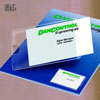Optic-Video version (objectives with screw fixing: 4x – 6x – 10x –15x – 20x – 30x and specific eye piece)
Video only version (objectives with magnetic fixing)
These extremely compact new models are completely in aluminium and easy to move. They don't need external power connections, but only a single USB cable. They can be used on flat surfaces and on cylinders up to a minimum diameter of 80mm, (with the Roll Plus accessory, in a standard version or with magnetic rollers, it is possible to inspect rollers up to a minimum diameter of 10mm). The 2034 CIL Roll, can be equipped with a 6000K led lighting system with coaxial light CIL, and with episcopic light (reflective lighting) Pen Lite. In both versions of illumination, the intensity of light can be regulated allowing for professional examination of very different surfaces (metal, paper, ceramic, plastic, mirrors, rough surfaces etc) having a wide range of objectives available for enlargements up to 2500x (with reference to a 17" monitor).
Coaxial light is ideal to examine extremely small imperfections or cracks on metal, while an examination of rubber and plastic surfaces in general is much more efficient with the Pen Lite episcopic lighting system, using low enlargement objectives (30-40x).
The 2034/2054 Roll Cil is also supplied in an optic-video version, with the possibility of working optically, by inserting or removing the camera when a computer is not available.
The choice between a video only version and an optical and video one should be made according to the kind of work to be carried out.
Each one of the two systems offers more advantages compared with the other according to the different applications. In general it can be stated that, if you need the coaxial light and you want to achieve the largest possible visual field, the 2034 CIL optic-video series is recommended. With reference, for example, to the photogravure field, when cells of different types of lines are to be inspected or measured, the best solution it to use the 2034 CIL optic-video, while if very small cells are to be analysed on Anilox ceramic cylinders it is best to choose the 2034 CIL video as it offers greater precision in measurements and has a better support for the objectives with a high enlargement values.
The Mpx cameras connected to the whole range of these video-microscopes are all professional ones and can work with operative systems with 32 and 64 Bit (XP, Vista, Windows 7– 8 ). The camera can be 1,3Mpx or 5Mpx.
The optimal choice of the camera (the price difference is very small) depends a lot on the PC you will use. If you choose a 5Mpx camera, you must remember that a lot of resources will be required by the PC, and if they are not available, you will find a lot of difficulties already with the focusing, with image freezing, lag between frames etc. The most interesting benefits in the choice of the 5Mpx camera definitely lie in the possibility of zooming without losing the image quality and avoiding to purchase possible additional objectives with greater enlargement factors. If a normal PC is to be used, the 1.3Mpx camera will not create any problems.
Two different types of software (Video View Basic or Video View Light) can be combined with these microscopes according to the various working requirements: with Video View Basic all types of measurements can be taken, images can be captured, they can be compared, measurements can be taken on photos, also after some time and in another country (for example sent by E-mail without needing to reconnect the microscope), you can zoom adapting all the previously taken measurements to the new enlargement factor, you can superimpose an image or a CAD drawing in transparency over another video image etc.
If your only requirements are to take photos, make comparisons and linear measurements, without advanced functions, the Video View Light version is sufficient.
APPLICATION EXAMPLES
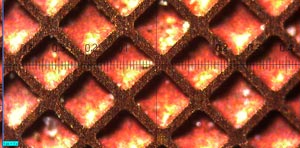
60 lines/cm rotogravure cylinder
with led penlight and 2034-100 microscope
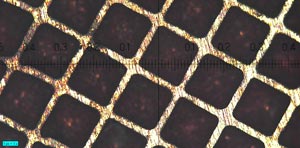
60 lines/cm rotogravure cylinder
with coaxial light and 2034-100 microscopes
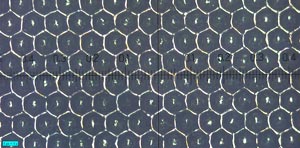
140 lines/cm anilox cylinder
with coaxial light and 2034-100 microscope
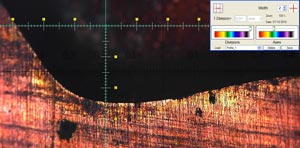
Rotogravure cylinder
with led penlight and 2034-40 microscope
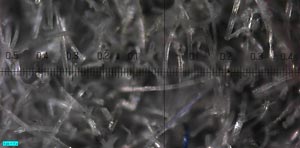
Fibre of fabric with led penlight
and 2034-100 microscope
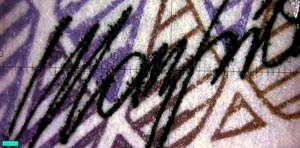
Banknote with led penlight
and 2034-20 microscope
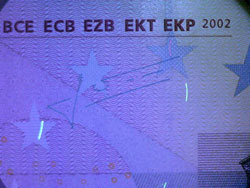
Banknote with uv light
and 2034-20 microscope
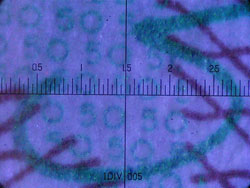
Banknote with uv light
and 2034-20 microscope
Click for Examples of Magnification Choices
Camera datasheet and minimum system requirements:
USB camera: DNS-1.3
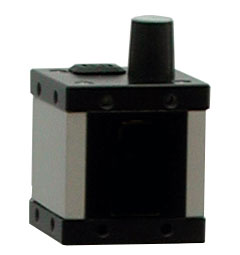
Image Sensor: 1/3" C-MOS
1.3 Megapixels
Available Resolutions: 1280x960 (SXGA)
Output color format: Y800. RGB24. RGB32 (8bits)
Automatic/Manual White Balance
USB2.0 interface
Operat ive temperature: -5°C - 45°C
Minimum system requirements
Operating system : Windows XP; Windows Vista; Windows 7; Windows 8
CPU: Intel Pentium IV 2 GHz or compatible (recommended Intel Core i7. 2.3 GHz)
RAM memory: 2 GB (recommended 6 GB DDR3)
Graphic Card: 512 MB dedicated (recommended 2 GB)
Hard disk space: about 20 MB
Input: 1 USB2.0 for video input;
1 USB2.0 for the software dongle
USB camera: DNS-5.0

Image Sensor: 1/2.5" C-MOS
5 Megapixels
Available Resolutions: 2592x1944. 1280x960 (SXGA). 640x480 (VGA)
Output color format: Y800. RGB32 (8bits)
Automatic/Manual White Balance
USB2.0 interface
Operat ive temperature: -5°C - 45°C
Minimum system requirements
Operating system (32-64 bit versions): Windows XP; Windows Vista; Windows 7; Windows 8
CPU: Intel Pentium IV 2 GHz or compatible (recommended Intel Core i7. 2.3 GHz)
RAM memory: 2 GB (recommended 6 GB DDR3)
Graphic Card: 512 MB dedicated (recommended 2 GB)
Hard disk space: about 20 MB
Input: 1 USB2.0 for video input;
1 USB2.0 for the software dongle
NEW USB camera: ENS-5.0
Ultra fast with new USB 3.0 connector
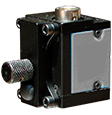
Image Sensor: 1/2.5" C-MOS
5 Megapixels
Available Resolutions: 2592x1944. 1280x960 (SXGA).
Output color format: Y800, Y16, RGB32 (8bits)
Automatic/Manual White Balance
USB3.0 interface
Operat ive temperature: -5°C - 45°C
Minimum system requirements
Operating system (32-64 bit versions): Windows 7; Windows 8
CPU: Intel Pentium IV 2 GHz or compatible (recommended Intel Core i7. 2.3 GHz)
RAM memory: 2 GB (recommended 6 GB DDR3)
Graphic Card: 512 MB dedicated (recommended 2 GB)
Hard disk space: about 20 MB
Input: 1 USB3.0 for video input;
1 USB2.0 for the software dongle
DIFFERENCES BETWEEN THE MICROSCOPES series 2034 and 2054
2034: in 2034, focusing is much more linear, it is softer and more accurate as it uses a helical mechanism in vertical transmission of movement. The focusing sleeve does not have an excessive effect on the stability of the instrument in micro movements (objectives with great enlargement). Furthermore, the sleeve has 100 visible decimal divisions on the external crown from which it is possible to check the movement in the Z direction with a decimal precision, or as a reference point to return much faster to previous position.
2054: in 2054, regulation of focusing is performer using levers that act directly on a cog, making positioning much faster especially when low enlargement optics are used.
COAXIAL LIGHT (CIL) and REFLECTED LIGHT (Pen lite)
COAXIAL LIGHT: light reaches the surface of the object only in a perpendicular direction, passing across the same optical axis as the objective and creating strong contrasts; this is due to the axial upwards reflection of the rays originating from the flat surfaces (white on the screen and from grey to black, the ones reflected by the inclined surfaces). This system is ideal to visualize small cracks and incisions on metal and ceramic surfaces and on symmetrical surfaces in general: it does not adapt very well to surfaces such as paper, rubber and similar.
Using the CIL lighting system with microscopes from the series 2034-2054 only with a video camera, it is possible to use high enlargement objectives only. As the CIL lighting system allows for easy removal, it is also possible to use objectives with lower enlargement using reflected illumination (PEN LITE).
ILLUMINATING PEN: illumination is provided by an external light source in an inclined position compared with the surface of the object. In this case the image is created by shadows (dark-light) caused by the obstacles encountered by the rays along the way.
This system is very much requested in the analysis of flat paper surfaces, in order to visualize morphology in the best possible way.
FLAT; ROLL; M-ROLL; ROLL-PLUS
FLAT: alone it is possible to use microscopes 2034/2054 for flat surfaces only.
ROLL: with supporting surfaces that are similar to rollers, it is possible to use microscopes 2034/2054 on curved surfaces (for example cylinders) and on flat surfaces. The supporting surfaces of the rollers in microscopes are covered in rubber to avoid damaging very delicate surfaces.
M-ROLL: the rollers of the microscopes can also be magnetic; they are recommended when users are forced to examine curved ferrous surfaces where the stability of the microscope may be jeopardized by possible movements or vibrations.
ROLL-PLUS: Couple of additional rolls to use with the stand Roll 2034-2054 for the inspection of curved surfaces or cylinders with 10 mm of minimum Ø.
VIDEO ONLY and VIDEO/OPTICS
VIDEO ONLY: by using this system it is possible to use all of the objectives and therefore enlargements of 25x to 2500x with reference to a monitor of 17”.
- The video only, use objectives with a magnetic attachment.
- The absence of additional optic groups and moving mechanical parts allows for a higher quality of images and greater precision in measuring compared with the optical/video version. Using the coaxial light (CIL) with these microscopes, it is not possible to use low enlargement objectives.
OPTICS/VIDEO: the microscopes 2034-2054 that are provided with the optic and video system can only use objectives with a screw attachment, with the advantage of having low enlargement objectives even with a coaxial light (from 40x upwards Field of View 2,3x1.23mm). These microscopes are vital if a computer is not always available to hand.
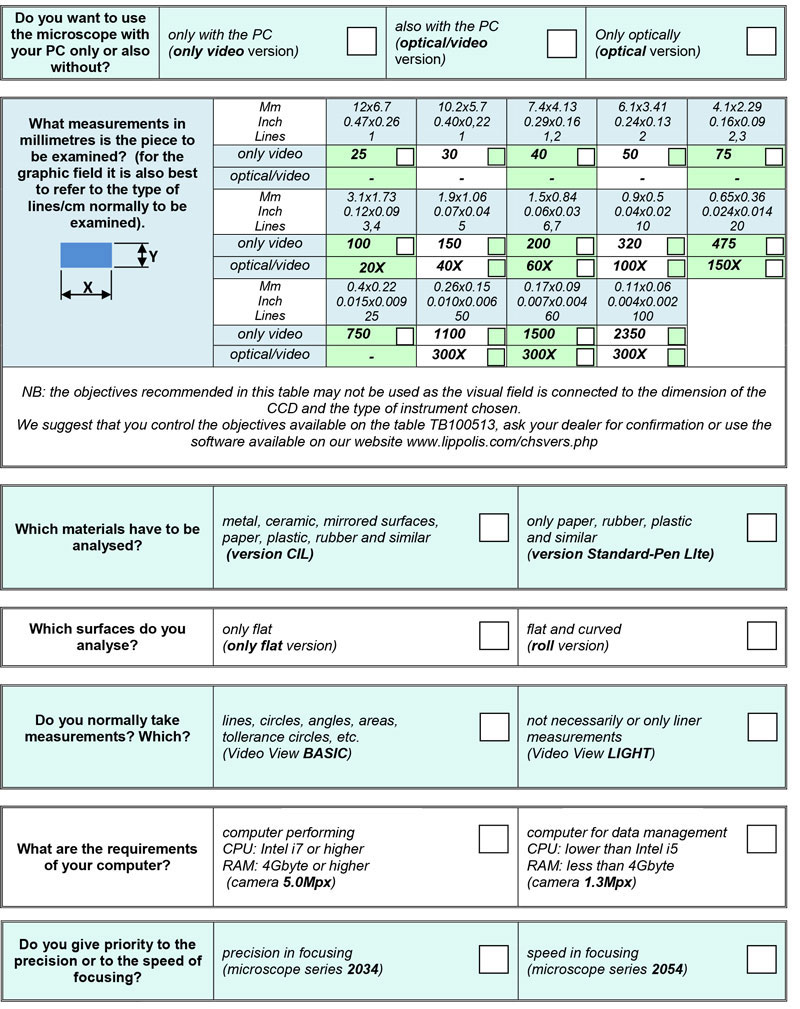
Example:
- Do you want to use the microscope only with the PC or without? Without optic/video
- What is the measurement in millimetres of the fault to be analysed? If you analyse cylinders, how many reticulations are there in 10mm? 1,5x0,9mm less than 10X
- What type of material is the surface to be analysed? Steel Cil
- Which surfaces do you analyse? Only flat
- Do you take measurements? Which? Circles and concentric circles Video View BASIC
- Which systems does your computer have? Computer for data management 1,3Mpx
- Do you give priorities to precision or to the speed of focusing? Precision 2034
Therefore the recommended version is:

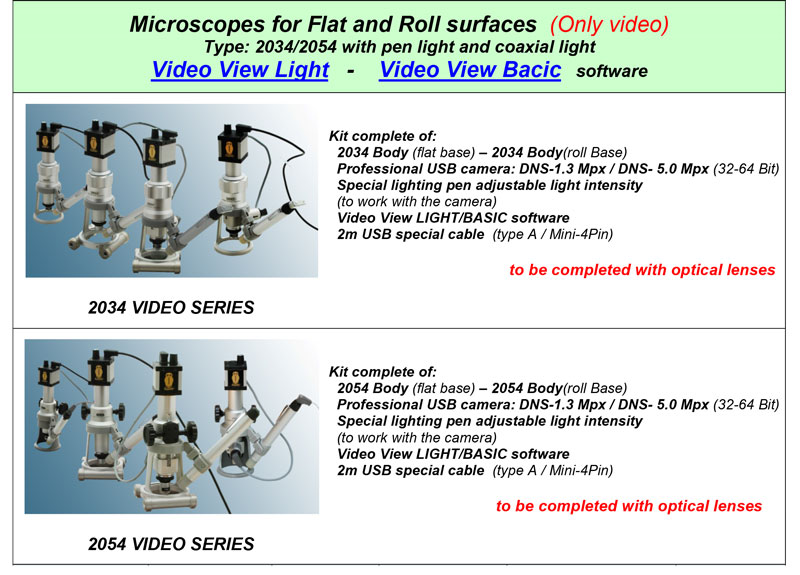
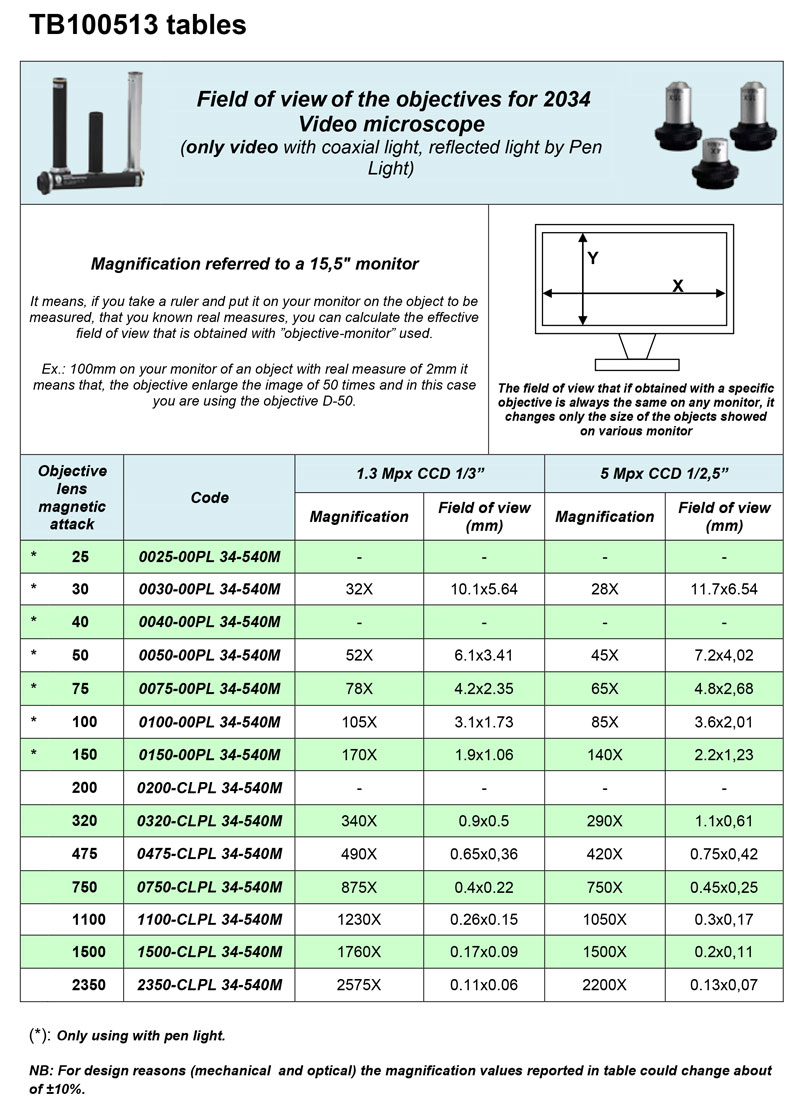
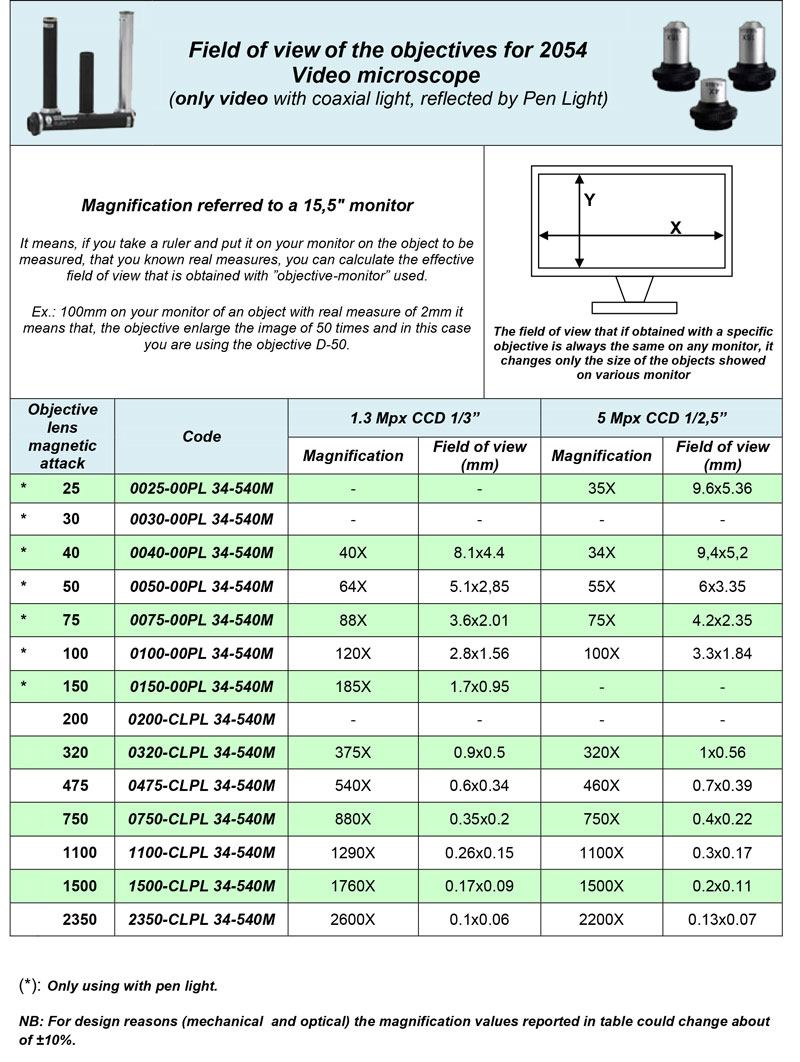
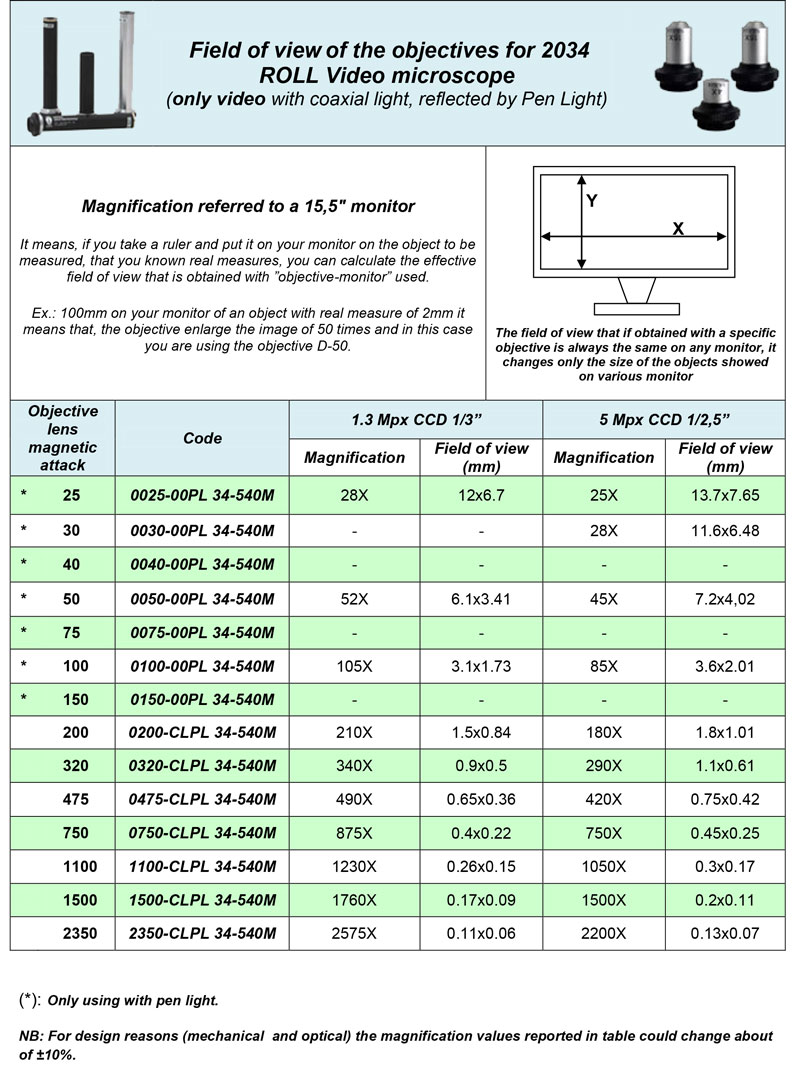
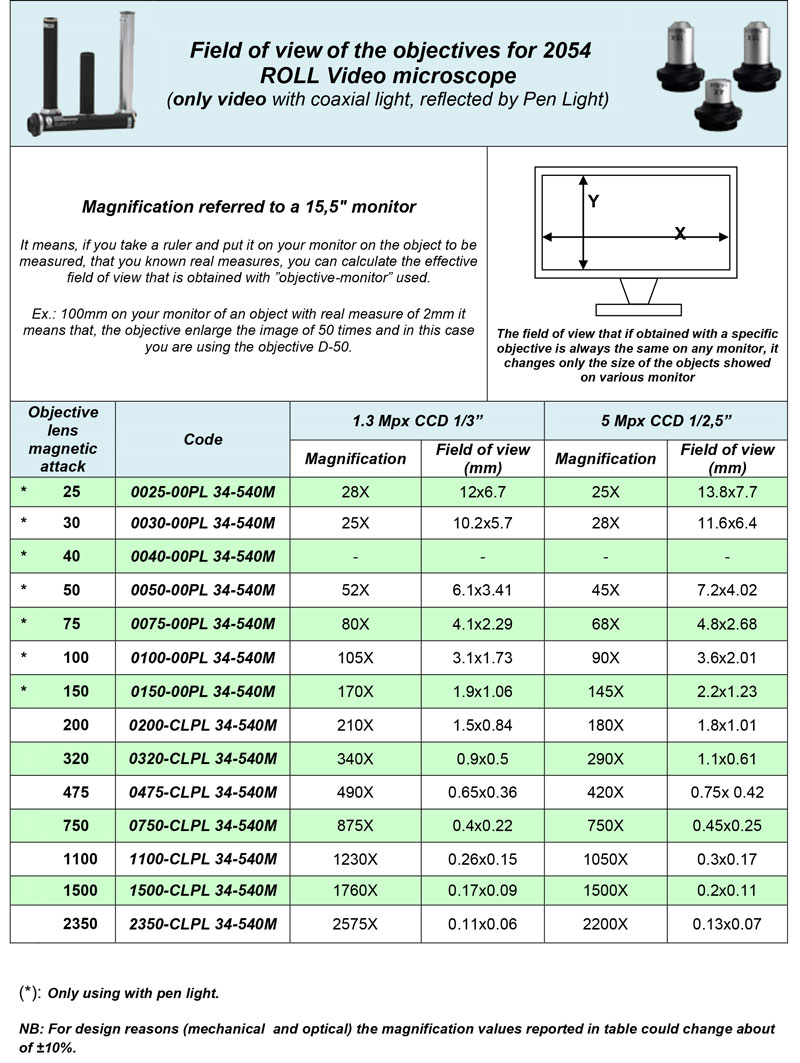
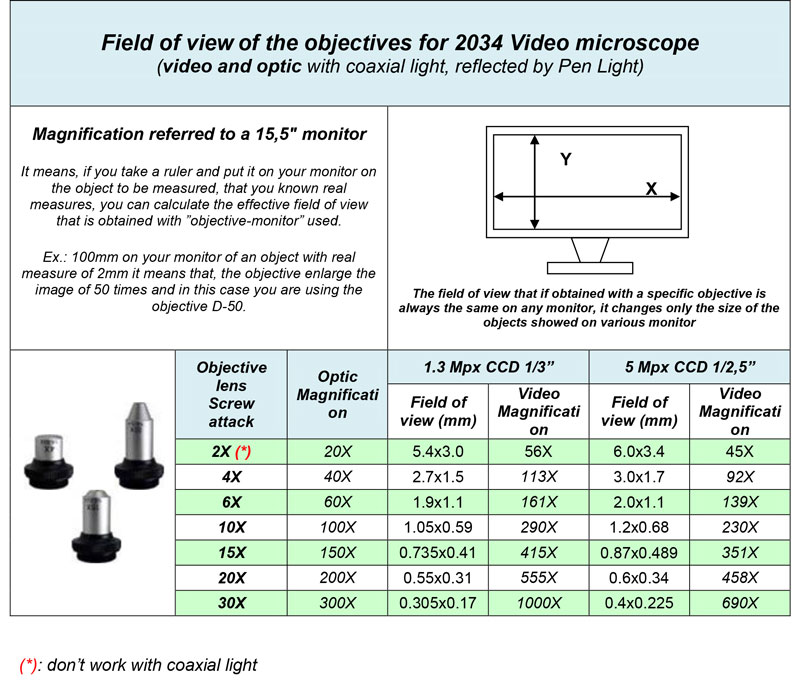
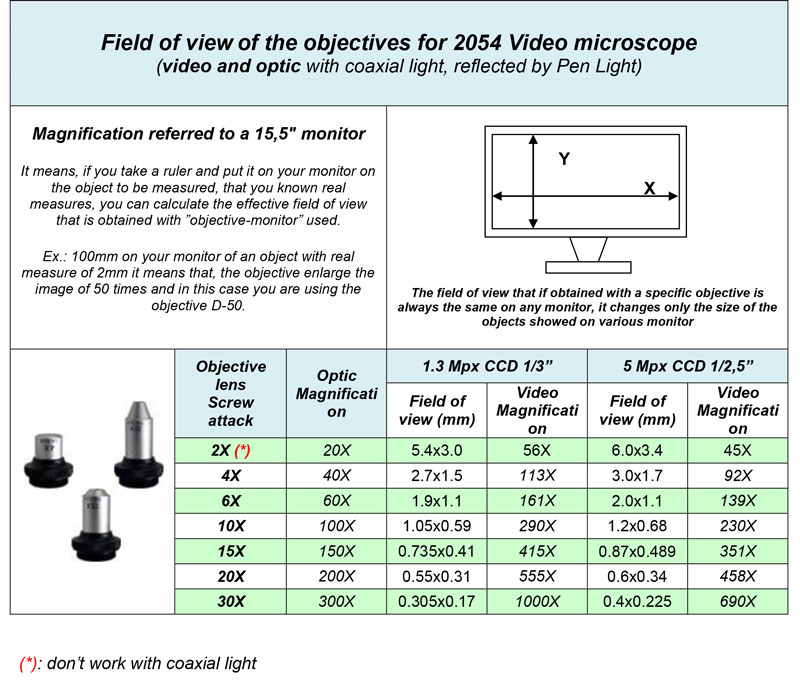
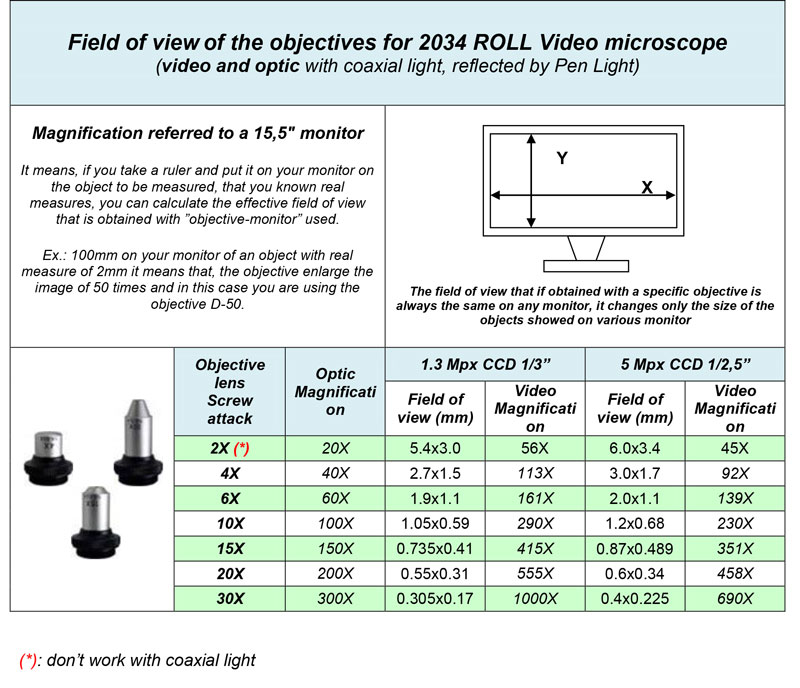
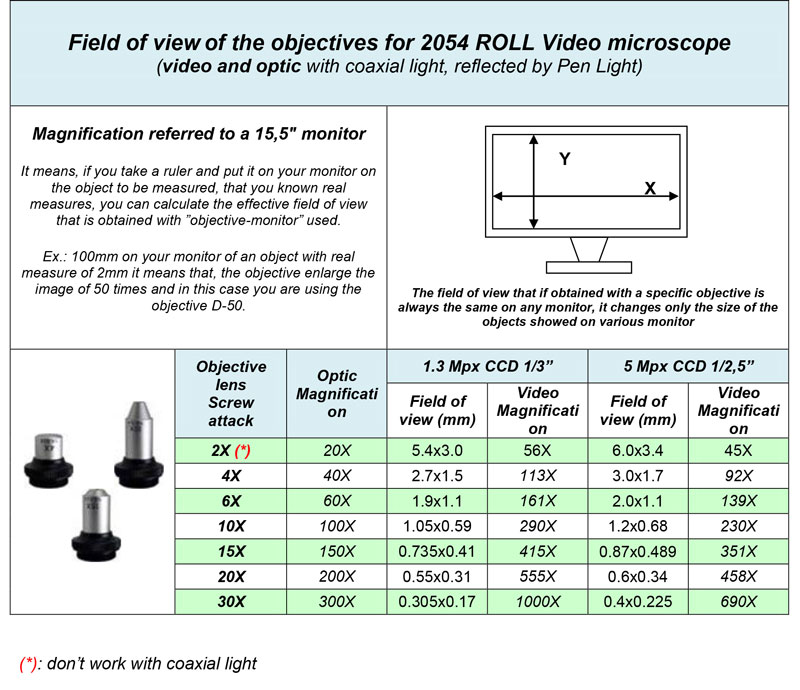
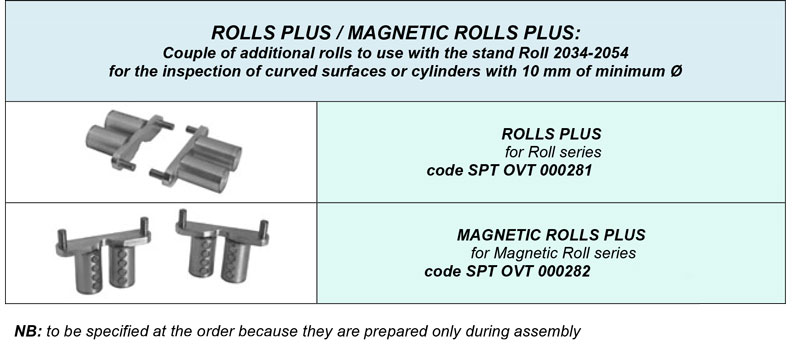
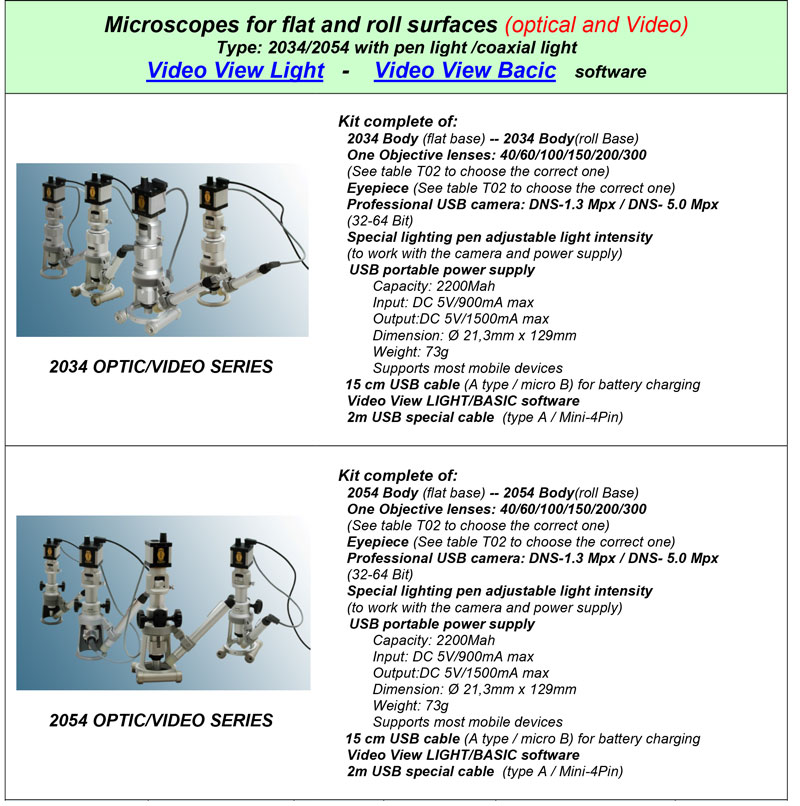
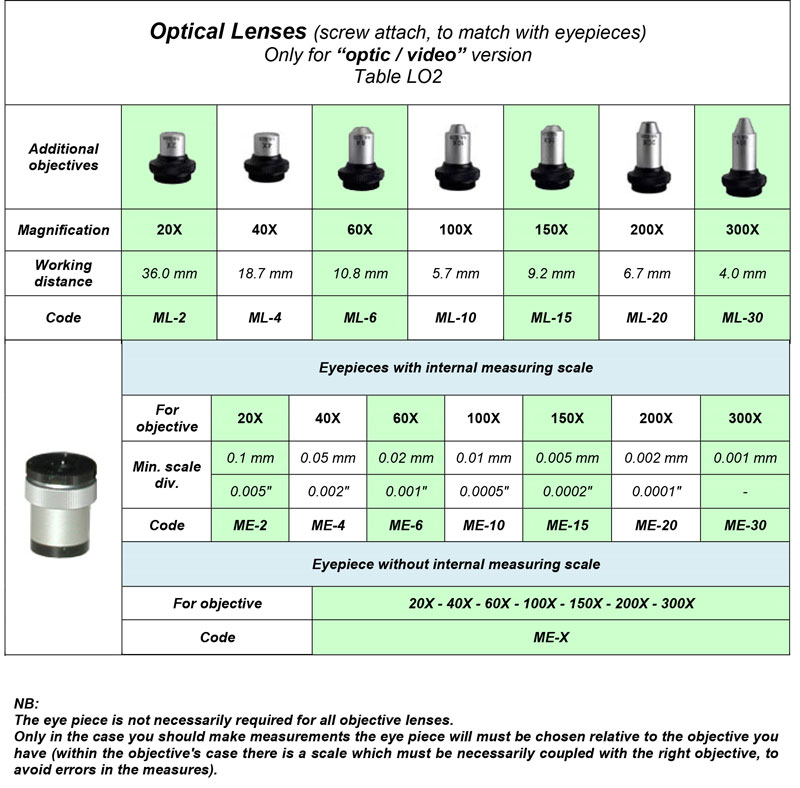
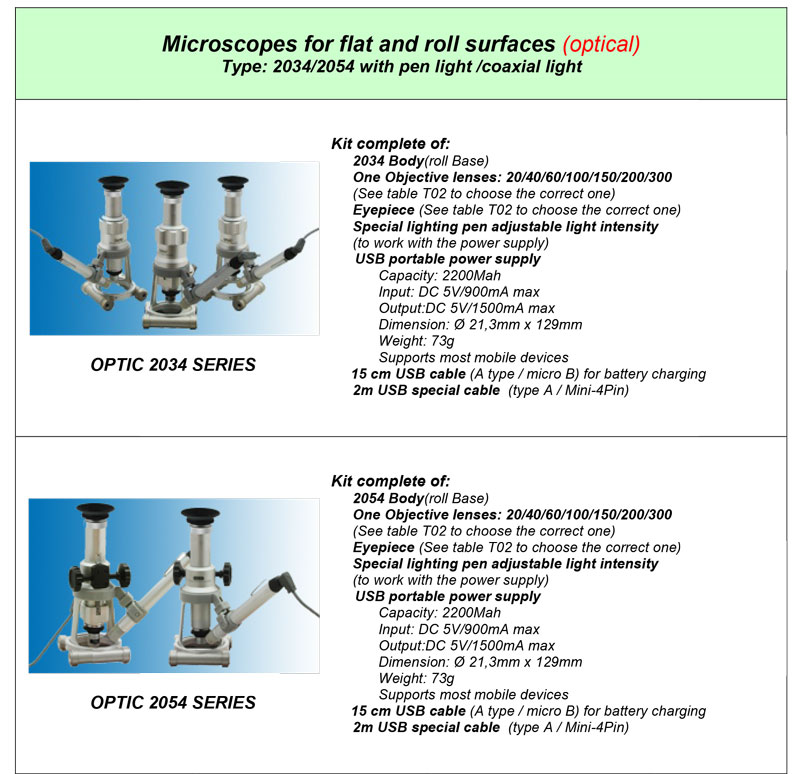
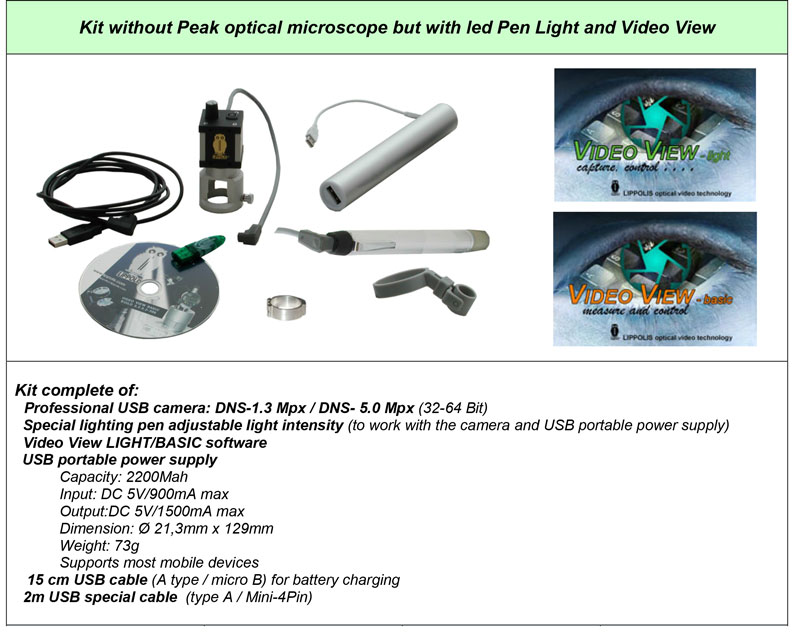
All 2034 and 2054 Series Peak Wide Stand Microscopes:
Since November 2017 we have been experiencing a shortage of these models in all magnifications and configurations.
Currently we have no date as to when (Peak Wide Stand Inch version) will be back in inventory.
We have been purchasing inventory from other sources offshore.
The prices are higher and only in metric versions.
E-mail for metric pricing.
Advise if you want your inquiry added to our list and you will be advised when we have Peak Stock.











